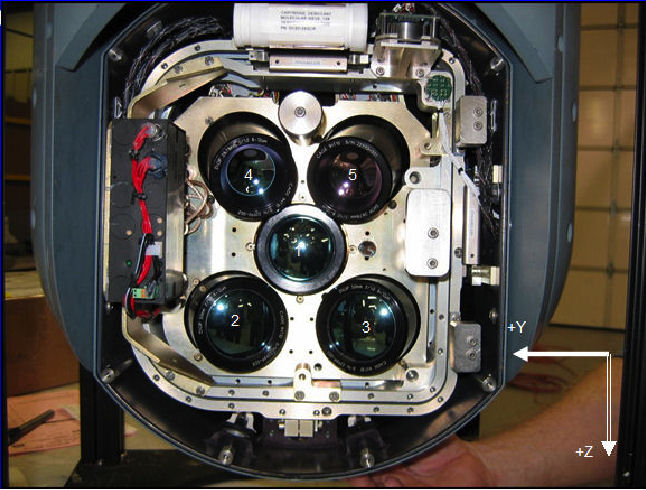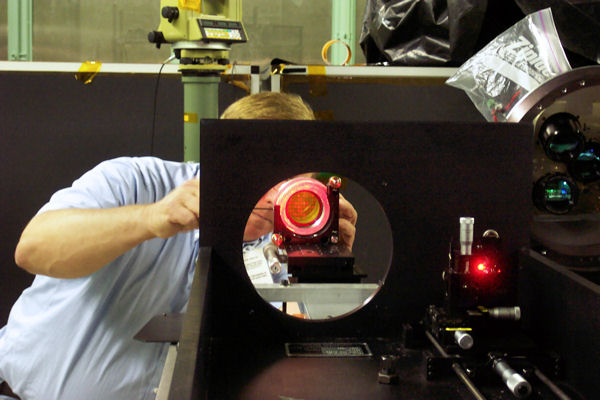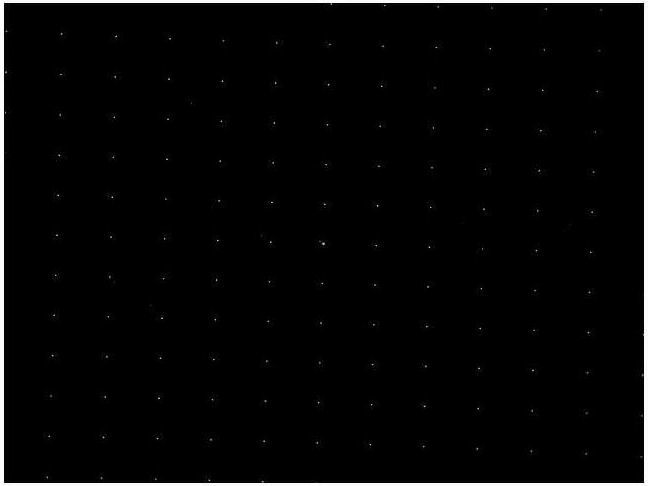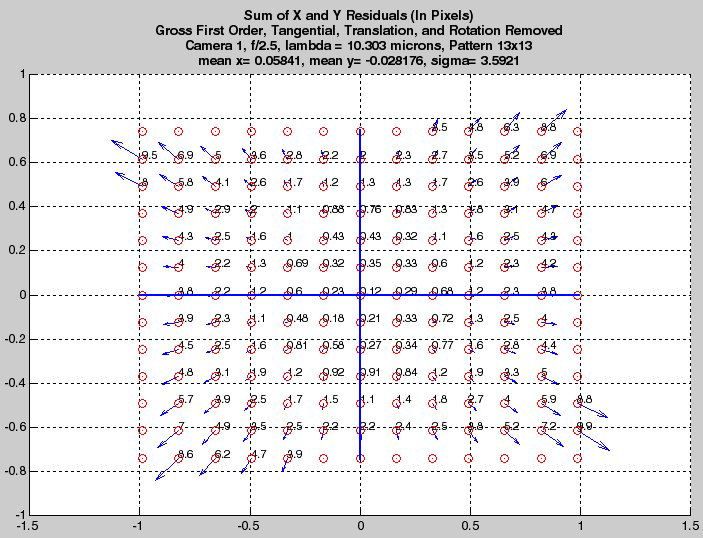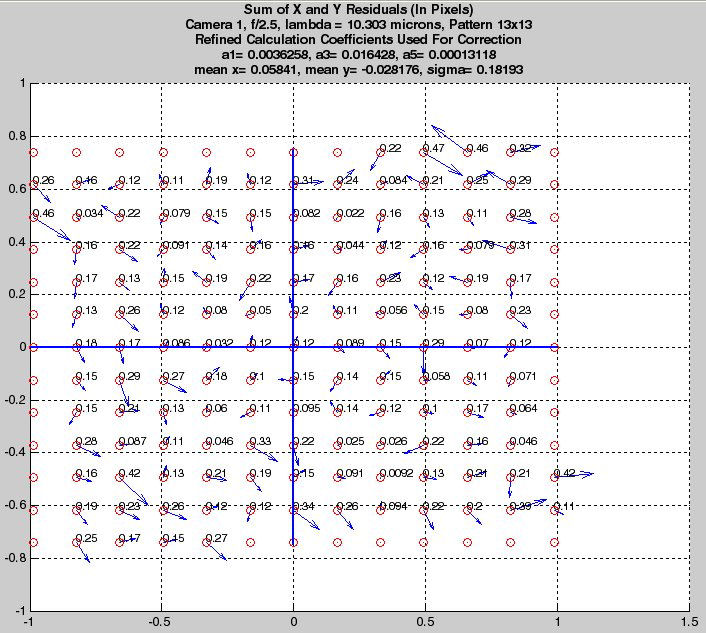MEASUREMENT OF GEOMETRIC DISTORTION
FOR AN INFRA-RED POLYCAMERA |
|
|
The metrology task at hand successfully 1) measured the geometric distortion of five infrared lenses comprising a polycamera, and 2) measured and aligned the lens' optical axes to synthesize a system with a wider field of view than any single camera. The optical and mathematical bases of the project are fully detailed in a final report which the interested reader may obtain by clicking on the Request link below.
Briefly, explained two high precision diffractive holographic element were built on ZnSe to generate a rectangular grid of points to very high precision at each camera's focal plane. Consideration was given to final wavefront errors of the plates and reflections which might corrupt the optical pattern. Theodolites were used to measure the orientation of each camera with respect to the others.
Geometric distortion was measured to fifth order. The RMS residual error after applying these coefficients was a pixel by 5.2. To obtain this level of correction, a special algorithm was developed to find the coefficient fit to the geometric distortion equation. It's important to note this algorithm did not employ a least squares fitting routine, since this technique tends cross couple its result amongst the polynomial terms.
|
|
|
|
|
|
|
View of the 5 Cameras Comprising the PolyCamera
|
|
|
|
Aligning The Starfield Calibration Target
|
Shooting Camera Angular Orientation With A Theodolite
|
|
|
|
Raw Starfield Data Pattern From Camera 1
|
|
|
Measured Starfield Starting Positions
For Camera 1 In Pixels
|
|
|
Corrected Starfield Positions
For Camera 1 In Pixels
|
|
|
|
